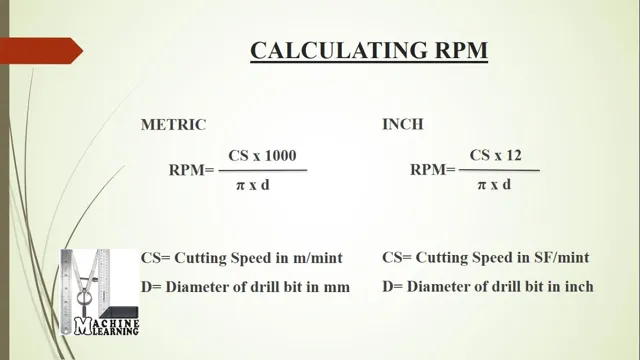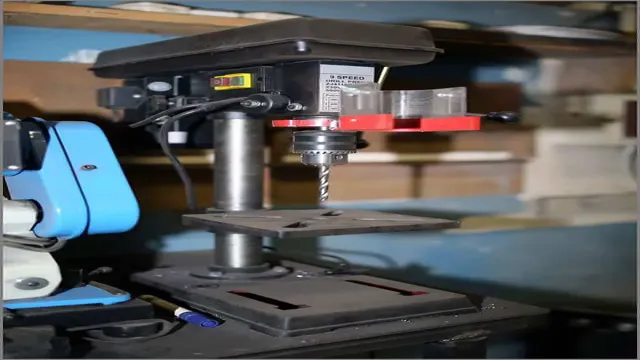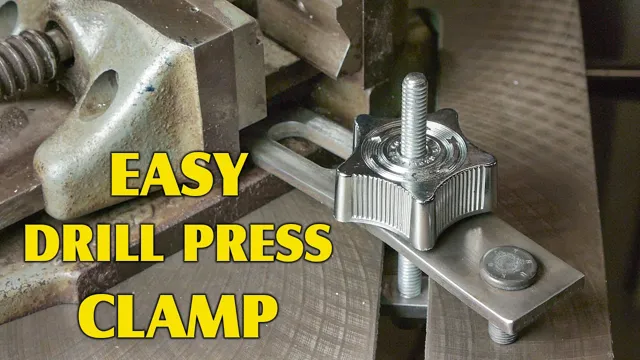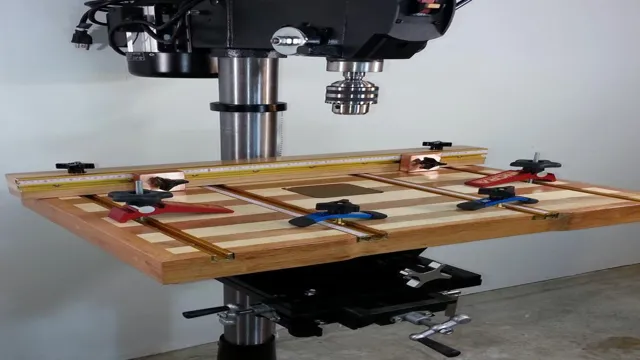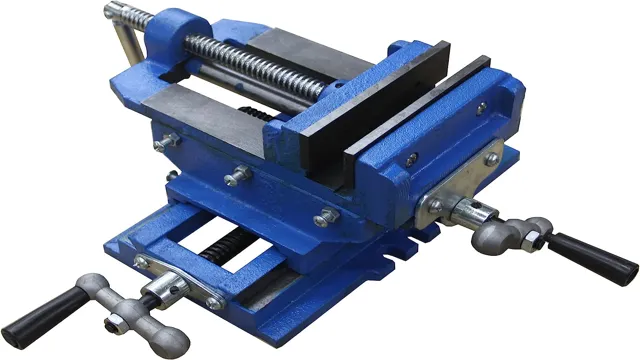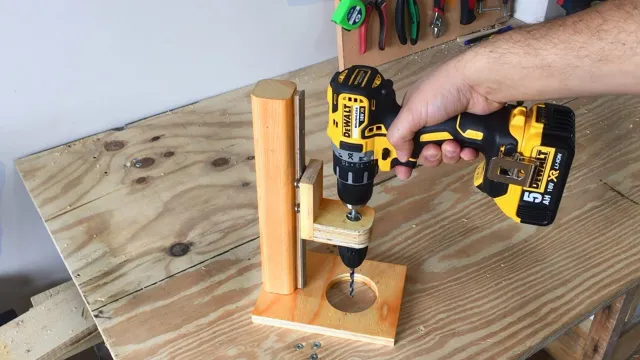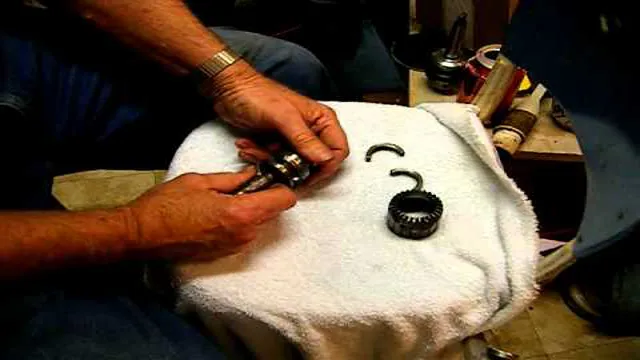Can You Use a Mill as a Drill Press? Benefits, Risks, and How-to Guide.

Drilling a hole is one of the most common tasks in any DIY project, and drill presses make it easier to perform this task accurately and consistently. However, for those who do not own a dedicated drill press, a mill may be a tempting alternative. The question remains, can a mill be used as a drill press? The answer is somewhat complicated and depends on what you are drilling, but there are some key considerations to keep in mind.
In this blog post, we will explore the possibility of using a mill as a drill press and which factors to take into account to make an informed decision. So, let’s dive in and find out if you can replace your drill press with a mill or not!
Understanding the Differences and Similarities Between Mills and Drill Presses
Many people wonder whether they can use a mill as a drill press, given that they are both machines capable of drilling holes. While there are some similarities between the two machines, there are also some significant differences to keep in mind. One of the most important differences is that a mill is designed to perform a wide range of tasks, including drilling, cutting, shaping, and more, while a drill press is designed primarily for drilling holes.
This means that a mill may be able to perform some of the tasks of a drill press, but a drill press will be more efficient and effective when drilling holes. Additionally, mills often have more complex controls and require more specialized knowledge to operate effectively, while drill presses are generally simpler and easier to use. In short, while it is possible to use a mill as a drill press, it is not always the best or most efficient choice for the task at hand.
Functionality and Design
When it comes to machining, mills and drill presses are both very useful tools, but they are quite different from each other. While drills can only make holes, mills are able to do many more things by cutting and shaping material. In terms of their design, drill presses are simpler and more compact machines that are primarily used for drilling holes into workpieces.
On the other hand, mills are larger and more complex tools that use multiple cutting tools to shape and cut materials. However, despite their differences, both mills and drill presses have similarities in terms of their basic functionality. Both types of machines use rotating cutting tools to remove material from a workpiece, and they can both be used to create precise shapes and designs.
So whether you are looking to drill holes or shape and cut materials, mills and drill presses are both essential tools to have in any workshop or manufacturing facility.
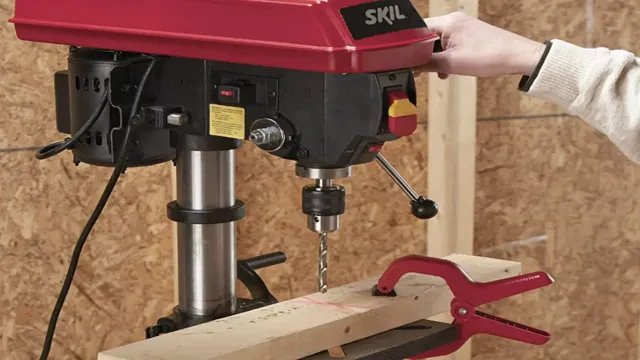
Cost and Versatility
When it comes to selecting the right tool for your fabrication needs, it’s important to understand the differences and similarities between mills and drill presses. Both machines can be used for cutting and drilling, but they excel in different areas. One of the key differences is cost.
Drill presses tend to be less expensive than mills, making them an attractive option for those on a budget. However, mills offer more versatility and precision, making them a better choice for more complex projects. Mills can also handle larger workpieces and offer more control over the cutting process.
Ultimately, the decision between a mill and a drill press depends on the specific needs of the project and its budget.
Can You Use a Mill as a Drill Press?
Yes, you can use a mill as a drill press. In fact, many hobbyists and professionals use mills for both drilling and milling operations. However, it’s important to note that mills are not specifically designed for drilling, so there are some limitations.
For instance, depending on the size of the mill, you may not be able to drill as deep as you could with a dedicated drill press. Additionally, the accuracy of hole placement may not be as precise because mills are designed for cutting through material rather than drilling precise holes. That being said, if you have a mill and need to drill some holes, it can be a perfectly suitable option.
Just make sure to carefully review the manufacturer’s instructions and take all necessary precautions to avoid injury while operating the machine.
Advantages of Using a Mill as a Drill Press
If you’re wondering if you can use a mill as a drill press, the answer is yes, you can. In fact, there are advantages to using a mill as a drill press. One of the biggest benefits is accuracy.
A mill has a much more precise spindle than a standard drill press, which means that you can drill holes with much greater accuracy. Additionally, mills typically have a more robust build that can provide more stability during drilling, leading to more precise drilling and less vibration. Another advantage is the versatility that a mill offers.
Not only can it be used for drilling, but you can also use it for milling, cutting, and shaping various materials. While drill presses are designed specifically for drilling holes, mills offer a wider range of capabilities. Overall, if you have a mill and need to drill precise holes, using it as a drill press can offer numerous advantages.
Disadvantages of Using a Mill as a Drill Press
Using a mill as a drill press is possible, but it comes with a set of disadvantages. One major disadvantage is the cost. A mill is typically much more expensive than a drill press, and most professionals would recommend purchasing a drill press instead of attempting to convert a mill for drilling.
Another disadvantage is the setup time. It can take significantly longer to set up a mill for drilling compared to a drill press, which can cause delays and frustration. Additionally, using a mill for drilling can cause excessive tool wear and can be dangerous if not used properly.
While a mill can be used as a drill press in some situations, it is not always the best choice. It is important to weigh the advantages and disadvantages and make an informed decision based on the project at hand.
Safety Concerns When Using a Mill as a Drill Press
While it is possible to use a mill as a drill press, there are some safety concerns to take into account. A mill typically operates at a much higher RPM than a drill press, which means there is a greater risk of the drill bit breaking or shattering. Additionally, the forces involved in milling are significantly different from those used in drilling, so adjusting the mill to accommodate drilling may produce unexpected results.
To ensure safety, it’s important to make sure the mill is properly secured to the work table and the workpiece is securely clamped in place. It’s also important to choose the right type of drill bit for the job and to use appropriate cutting speeds and feeds. Taking your time and proceeding cautiously can help mitigate the risks involved in using a mill as a drill press.
However, it’s worth keeping in mind that a mill is designed primarily for milling operations and is not intended to be used as a drill press. If you find yourself needing to drill frequently, it may be worth investing in a dedicated drill press to ensure that you’re able to complete your drilling tasks safely and efficiently.
How to Convert a Mill into a Drill Press
“Can you use a mill as a drill press?” As a matter of fact, you can! A mill, with its versatile capabilities, can be converted into a drill press quite easily. The first step in doing so is to remove the milling cutter and attach a chuck or drill holder to the spindle. This will enable you to secure your drill bits accurately in place.
You may also need to adjust the spindle speed to optimize its performance when drilling. However, it’s important to keep in mind that while a mill can function as a drill press, it may not be as precise or efficient as a dedicated drill press. Nevertheless, if you’re looking to expand your workshop’s capabilities and save some space, converting your mill into a drill press can be a great option.
Tools and Equipment Needed
If you have a mill and want to add drilling capabilities, converting it into a drill press is a great idea. To do this, you will need some specific tools and equipment. First, you will need a chuck that can fit onto your mill’s spindle.
You may also need a drill bit set that includes the appropriate sizes for your intended drilling operations. Next, you’ll need to adjust the mill’s speed to match what is needed for drilling, and this might require an additional belt or pulley to change the drive ratio. You’ll also want to add a table to support your workpiece, and if your mill does not have a quill to allow for drilling depth adjustment, you can add a milling machine spindle that provides this feature.
With these tools and equipment in hand, you can easily convert your mill into a powerful drill press that can tackle a wide range of drilling tasks. So, why not give it a try and see how much simpler your work becomes?
Step-by-Step Conversion Guide
Converting a mill into a drill press can be a great way to broaden the functionality of your workshop tools. With the right tools and knowledge, this process can be done relatively easily. First, you will need to acquire a drill chuck and an arbor that fits the spindle of the mill.
Remove the milling cutter and replace it with the arbor and chuck. Then, adjust the table and depth gauge to accommodate the drill bit you will be using. It’s important to take your time with this step, as accuracy will be key for successful drilling operations.
Finally, adjust the spindle speed and begin drilling. Keep in mind that the weight of the mill may cause it to vibrate more than a traditional drill press, so take extra care to secure your workpiece and wear protective gear. Enjoy your newly converted tool!
Conclusion: When to Use a Mill and When to Use a Drill Press
In conclusion, while it may be possible to use a mill as a drill press in a pinch, it’s important to remember that just because something can be done, doesn’t always mean it should be done. As in many aspects of life, it’s always best to use the tool that is designed for the specific job at hand, rather than risking damage to the tool or producing sub-par results. So, if you find yourself facing a drilling task and only have a mill at your disposal, proceed with caution and be prepared for potential consequences.
“
FAQs
What is the difference between a mill and a drill press?
A mill is designed for cutting and shaping materials, while a drill press is designed for making holes.
Can a mill be used as a drill press?
Yes, a mill can be used as a drill press by installing a drill chuck in the spindle and using a drill bit instead of a cutting tool.
What are the advantages of using a mill instead of a drill press?
A mill offers greater flexibility in terms of the types of cuts and shapes that can be made, as well as the ability to work with harder materials than a drill press.
What are the disadvantages of using a mill instead of a drill press?
Milling machines are generally more expensive and require more maintenance than drill presses. They also require a higher level of skill to operate effectively.
Can you drill a square hole with a mill?
Yes, a mill can be used to cut a square hole by using a square end mill in the spindle and programming the machine to make the desired cuts.
What safety precautions should be taken when using a milling machine as a drill press?
Proper eye and ear protection should be worn, as well as gloves and a face shield. The workpiece should be securely clamped to the table, and the cutting tool should be properly lubricated.
Can a drill press be converted into a milling machine?
Yes, there are attachments available that allow a drill press to be used as a milling machine. However, these attachments are generally not as versatile or precise as a dedicated milling machine.

